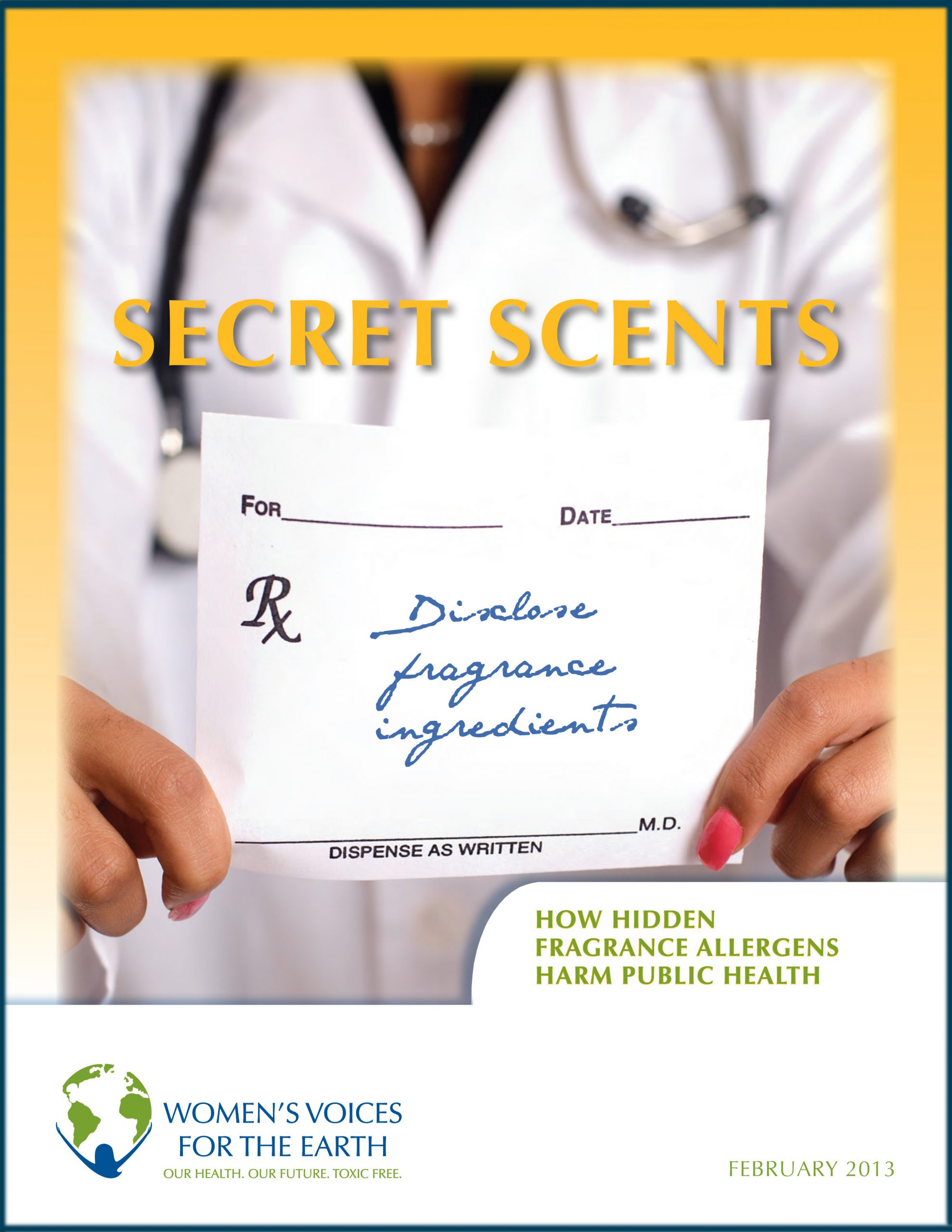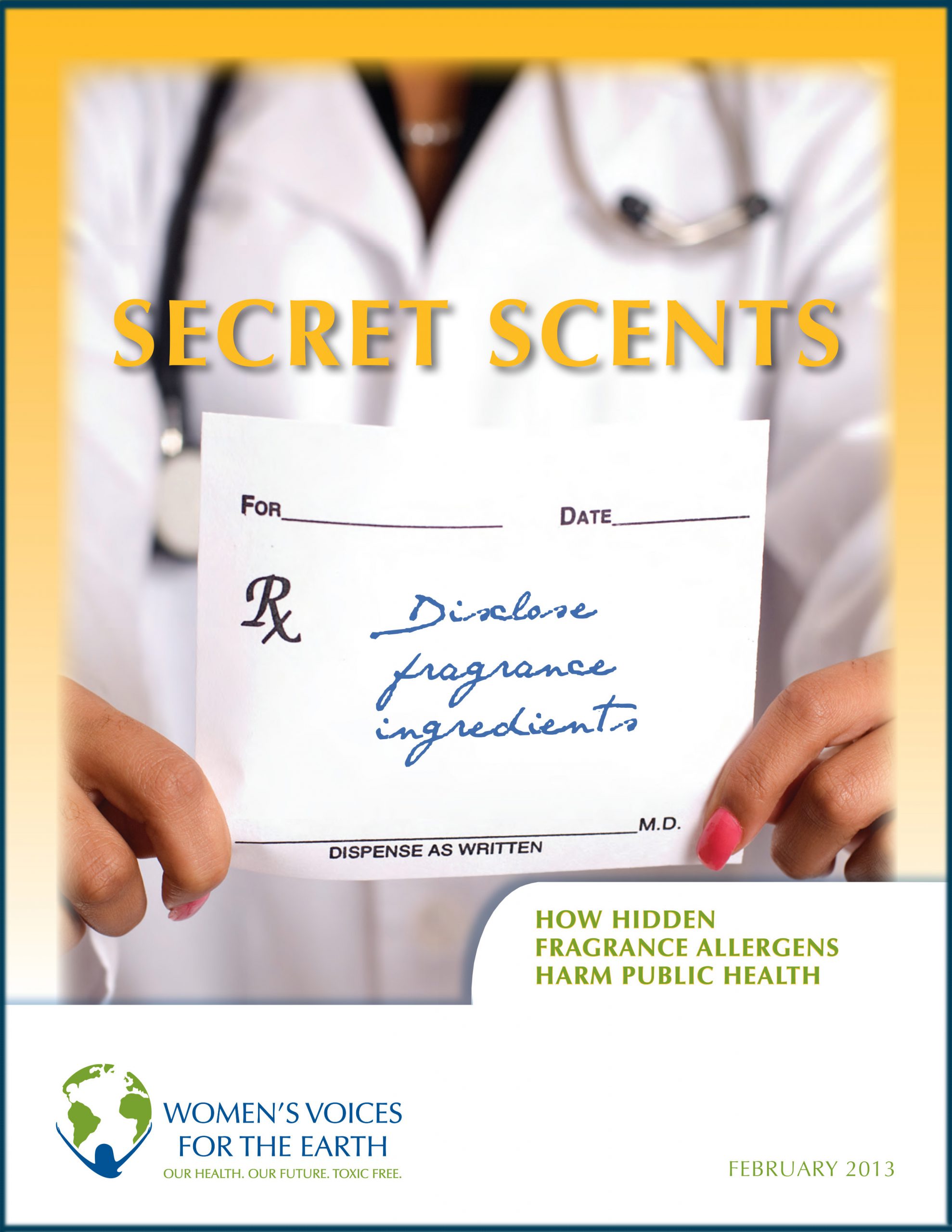 Uncovering hidden allergies from fragrances
Uncovering hidden allergies from fragrances
By Alexandra Scranton
Director of Science and Research Women’s Voices for the
Earth
Okay…so I’m a geek. I love data. And for the last year or so I’ve been digging into
dermatological studies, only to find crazy statistics on skin allergies in
women and kids. Millions (yes millions)
of people are affected by skin allergies every day.
Women are much more likely to be affected than men, and the
rates in kids have been skyrocketing over the last few decades. And in almost every study, the data
points its fingers at “fragrance” as a major cause. And that’s where the frustration kicks in. What do we even mean when we say people
are allergic to “fragrance?” A
fragrance can be made of tens to hundreds of different chemicals that
collectively impart a scent. But
one “fragrance” can be made of completely different chemicals than another.
Today Women’s Voices for the Earth released an important
report on this subject called Secret
Scents: How Hidden Fragrance Allergens Harm Public Health. We hope to
uncover some of the mystery around fragrance allergies and some solutions we
can take to move us towards a healthier society.
So when it comes to fragrances, what are people actually
allergic to?
It’s like going to
your doctor and being told, “Sorry, you are allergic to food.” In reality, you
have an allergy to a specific allergen, such as soy, or peanuts or cow’s milk
etc. And when you go to the store
to buy food, you can look at the label and find out whether it contains your
problem allergen or not. For the
most part, you can choose what foods to avoid to prevent a reaction. But with fragrance, you can’t do
that.
For one, it’s hard to find out what fragrance allergen you
are actually allergic to. Is it
geraniol? Is it linalool? And even if you can find that out, all
that you are told on a label of a body lotion is that the product contains
“fragrance.” Does that contain my
problem allergen or not?
But the fragrance industry keeps all those ingredients a
secret…why?
The best answer I’ve been able to find is tradition. The fragrance industry has long held
extreme secrecy around its formulas as a value and asset to the business. They fiercely protect their right to
their intellectual property. And
no doubt, the creation of a fragrance is both an art and a science. It involves
some really complex chemistry and takes a lot of time, effort and money to get
it right. But is disclosing a simple list of the ingredients (without the other
details like amounts or how these ingredients are combined) really a threat to
intellectual property rights?
So what’s the holdup?
It certainly seems that revealing fragrance ingredients in consumer
products could make life for allergy sufferers and their health care providers
a whole lot simpler. And beyond
that – there’s a whole world of even more serious health impacts from fragrance
that have been documented. From
neurological symptoms, to immune system effects, to breathing problems and
more.
Fragrance exposure is making
life really, really difficult for some folks who are especially sensitive to
fragrance. And the frustrating
thing is that we cannot explain why a lot of that is happening. Because we don’t know what the
chemicals are in fragrance that people are reacting to. How does one even start a research
program on fragrance reactions when you don’t even have specific chemicals to
target?
As a society, we need to tackle this fragrance problem, for the
health of those who are affected. Because fragrance, in our society, is everywhere. And it needs to start with the simple
listing of ingredients in fragrance. I know it’s a major change in the culture of the fragrance industry, but
some traditions just have to be let go, especially when they are standing in
the way of people trying to protect their own health.
Please join me in asking the fragrance industry to be part
of the solution.
And if you want to know more about this issue – check out
our infographic and you can download my new report here.
To follow WVE on Twitter: @women4earth




